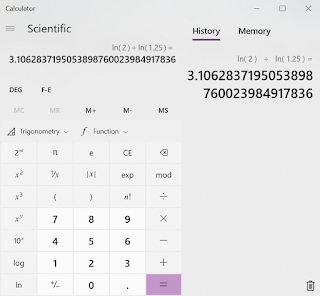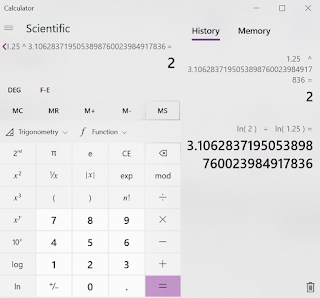rate at which things double. For those who might want
to calculate such things, here is a review of the mathematics
involved.
Let us say that, for every unit 1, I can expect a 25% increase.
The number of times at which this happens - n - determines
the global outcome. To tun 1 into 2, what should the value of n
be. That is our problem. And to solve it, we will need to use logarithms.
Indeed, we have two candidates, the natural logarithm using e
as a base, and the base 10 logarithm. The result, in both cases,
will be the same.
Math is Fun is one of my go-to sites. They explain logarithms
as follows:
And that is the heart of the matter. One needs to divide by
a value with an exponent, and the only way to do that is to
switch to two values that express exponents with respect to
the same base number.
Converting to logs is complicated, and the computer does it best.
Below, my Windows 10 calculator does the job.





No comments:
Post a Comment